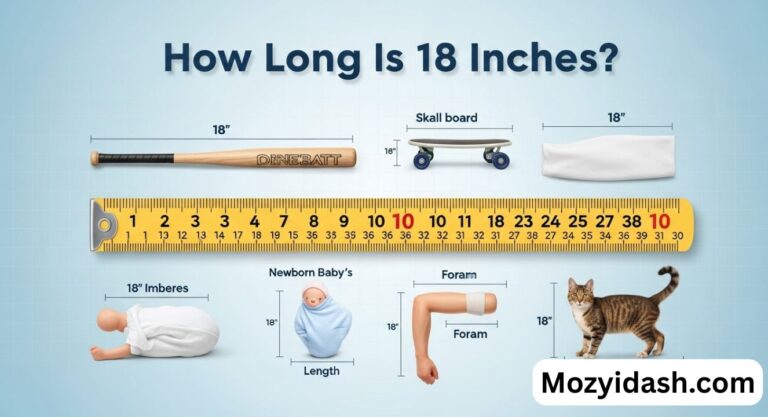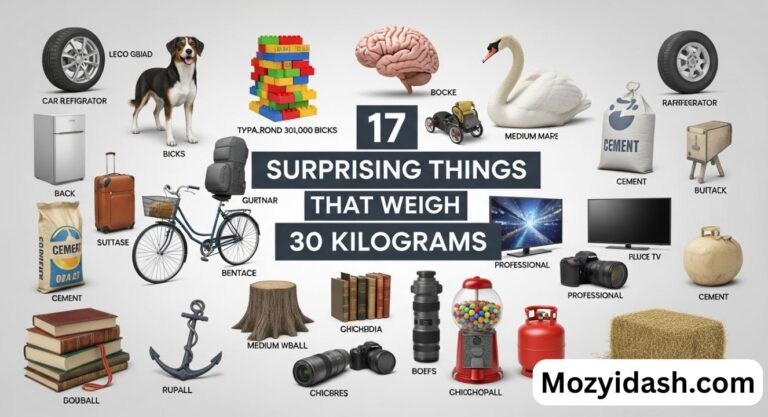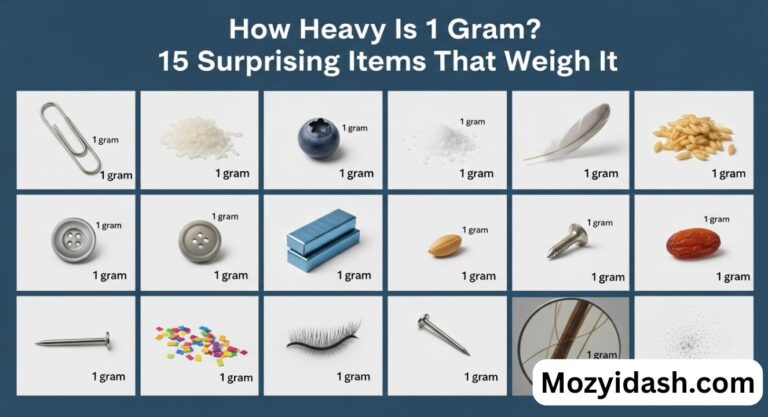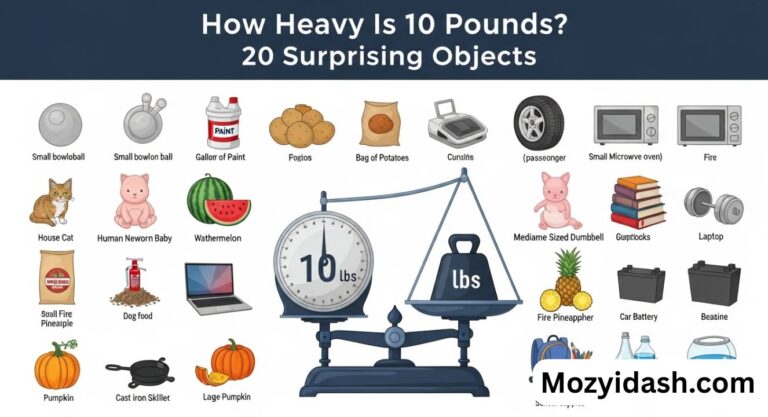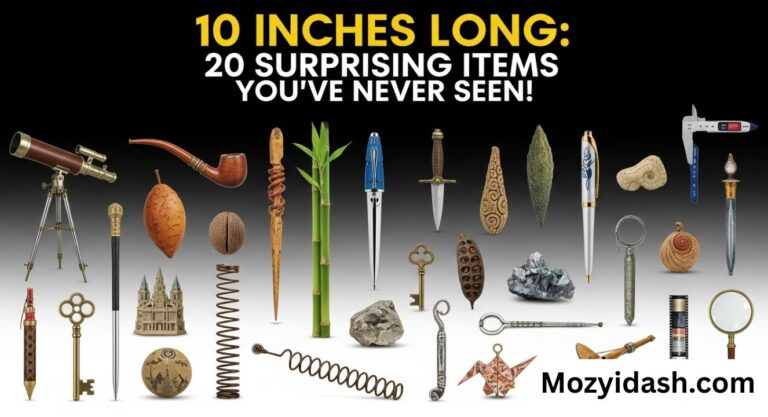10 Ounces: 18 Everyday Surprises You Won’t Expect
10 ounces means a small weight used to measure everyday things. It equals about 283 grams or two-thirds of a pound. This measurement helps people understand how heavy small items are in daily life.
Have you ever wondered what things weigh 10 ounces? You might be surprised to know that many everyday items, like a paper towel roll or a bowl, weigh about that much. It’s a fun and simple way to see how weight fits into your daily world.
In cooking, mailing, and sports, 10 ounces often appears as a standard weight. It helps measure food, pack items, and even balance sports equipment. Learning about 10-ounce objects makes understanding weight easy and practical.
How Much Is 10 Ounces?

Before diving into real examples, it’s important to understand ounces to grams conversion. In simple terms, one ounce equals 28.35 grams, so 10 ounces equals how many grams? The answer is 283 grams, or roughly 0.625 pounds.
In the U.S. measurement system, ounces and pounds are standard for everyday use. For instance, 16 ounces make one pound, meaning 10 oz to lbs equals about two-thirds of a pound. When you compare this to metric units, objects around 300 grams often match the weight of 10-ounce household objects.
This kind of weight comparison in ounces is helpful when cooking, packing, or even choosing sports equipment. Knowing how to estimate weight without a scale becomes easier when you remember a few common weights of daily objects.
| Measurement | Equivalent |
| 1 ounce | 28.35 grams |
| 10 ounces | 283 grams |
| 10 ounces | 0.625 pounds |
| 16 ounces | 1 pound |
Understanding these grams and ounces equivalence helps when you switch between the metric and imperial systems, especially for recipes, shipping, and science experiments.
Are Ounce and Fluid Ounce Identical?

Many people confuse an ounce vs fluid ounce, thinking they’re the same. In reality, an ounce measures weight, while a fluid ounce measures volume. This means 10-ounce weight examples differ from 10 fluid ounces of liquid.
For instance, 10 ounces of flour doesn’t equal 10 fluid ounces of milk, because flour is light and powdery while milk is denser. In the United States, 1 fluid ounce equals about 1.04 ounces in weight, but this can vary based on what liquid or material you’re measuring.
This distinction matters in kitchen item weights, recipes, and food items weighing 10 ounces. Bakers, for example, always check whether a recipe calls for ounces and pounds or fluid ounces. It’s a small difference that can change results significantly. Understanding this helps you improve precision in cooking, science, and packaging.
Common Things That Weigh 10 Ounces

The following are everyday items that weigh 10 ounces or close to it. These real-life weight examples can help you visualize weight and understand reference weights for comparison in a fun and practical way.
1. A Hockey Puck
A single hockey puck used in professional games weighs about 5 ounces. So, when you hold two pucks, you’re holding 10 ounces exactly. This example connects to sports equipment weights commonly used in North America. Hockey pucks are made of vulcanized rubber, and their standardized weight makes them perfect items weighing exactly 10 ounces.
2. 3 Decks of Cards
A standard deck of playing cards weighs about 3.3 ounces. That means three decks together weigh around 10 ounces. Card players often carry multiple decks, making this one of the most relatable small items weight list entries. If you’ve ever held a few decks in your hand, you already know how heavy is 10 ounces.
3. A Cereal Bowl
A cereal bowl made of ceramic or stoneware usually weighs close to 10 ounces when empty. These kitchen item weights are easy to recognize in daily life. In the U.S., cereal bowls are commonly used for breakfast, and this makes them a perfect example of household items weight guide objects.
4. 2 Baseballs
Each baseball weighs about 5 ounces, so two baseballs equal 10 ounces. This is another fun sports equipment weight example. Baseball fans can easily relate to this, as professional leagues maintain strict rules about ball weight for fair play. Holding two baseballs gives a perfect sense of objects that weigh 10 ounces.
5. A Paper Towel Roll
If you’ve ever restocked your kitchen, you’ve noticed that the weight of a paper towel roll feels consistent across brands. The average roll weighs 10 ounces, making it one of the most reliable 10-ounce household objects. This lightweight everyday object also helps demonstrate examples of weights for mailing packages since many shipping boxes fall within this range.
6. Ten Bic Ink Pens
A Bic pen weighs almost one ounce. When you collect ten pens, you get 10 oz items. Pens are one of the simplest real-life weight examples, ideal for schools or offices. You can easily use them as a reference weight for comparison when you need to guess how heavy something is.
7. Lay’s Classic Potato Chips (Family Size)
A family-size bag of Lay’s Classic Potato Chips weighs about 10.5 ounces. These food items weighing 10 ounces are familiar to almost every U.S. household. The packaging is designed to keep chips fresh while staying lightweight, giving another good weight measurement example you can hold.
8. A Box of Eight 60-Watt Bulbs
When you buy a box of light bulbs, the total weight can surprise you. Eight bulbs together weigh around 10 ounces. This may vary slightly by brand, but it’s a handy common weight of daily objects example. It’s also a good visualizing weight method—holding the box gives you a real feel for 10-ounce weight examples.
9. Regular-Size Pro Boxing Gloves
A pair of pro boxing gloves typically weighs 10 ounces. Boxers use them for matches and training, and this standardized sports equipment weight ensures fairness and safety. If you’ve ever lifted a pair, you’ve literally held 10 ounces in each hand, making it one of the most practical objects that weigh 10 ounces.
10. 12 Double-A Batteries
Each AA battery weighs about 0.81 ounces, so 12 batteries make about 10 ounces total. This example is a perfect weight of batteries reference. Batteries are found everywhere—remote controls, flashlights, and toys—making them a relatable everyday weight reference for household items.
11. Xbox Series X Controller
The weight of controllers like the Xbox Series X model is about 287 grams, or 10 ounces. For gamers, this offers a real sense of how lightweight everyday objects can still feel substantial. The design ensures balance, comfort, and durability, combining function with perfect 10-ounce weight examples.
12. PlayStation 5 Controller
The PS5 DualSense controller also weighs about 10 ounces (280 grams). Its weight provides ergonomic comfort and reduces fatigue during long gaming sessions. This 10 oz item is one of the best objects around 300 grams that you can hold daily, helping you visualize weight effortlessly.
13. 5 Fun-Size Snickers Bars
Each fun-size Snickers bar weighs about 2 ounces, so five bars make 10 ounces. This is a delicious way to understand food items weighing 10 ounces. You can even use candy as reference weights for comparison when teaching kids about measurements or how to estimate weight without a scale.
14. 10 Standard-Sized Wooden Pencils
Each wooden pencil weighs approximately one ounce. That means 10 pencils equal 10 ounces. This example fits perfectly in any household items weight guide, since pencils are universal and easy to find. Holding ten at once gives a tangible sense of 10-ounce household objects.
15. Set of 5 Tennis Balls
Each tennis ball weighs about 2 ounces, making five balls equal to 10 ounces. These are great sports equipment weights examples and help you relate the feel of objects that weigh 10 ounces to something familiar. It also demonstrates how small items weight lists can vary depending on materials and density.
16. A Small Tablet or iPad Mini
A small tablet, like an iPad Mini or other 8-inch Android tablet, usually weighs close to 10 ounces (around 284 grams). This makes it a perfect example of lightweight everyday objects that feel solid but are still easy to carry.
If you’ve ever held one while reading or watching a movie, you’ll notice it’s neither too heavy nor too light—just the right 10-ounce weight example. It’s fascinating that this single device, packed with technology, matches the weight comparison in ounces of simple household items like paper towels or a bowl.
17. A Standard Coffee Mug Filled with Coffee
If you pour coffee into a medium ceramic mug, you’ll find the total weight of the mug and coffee comes close to 10 ounces. The mug itself often weighs about 6 ounces, while 4 fluid ounces of coffee adds another 4 ounces of liquid weight.
This is an excellent example for understanding ounce vs fluid ounce, since the mug combines both a solid weight and a liquid weight inside. It also shows how food items weighing 10 ounces or drink portions can vary depending on what’s inside.
18. A Pair of Cotton Socks and a T-Shirt
When you combine a pair of cotton socks (about 3 ounces) with a light T-shirt (around 7 ounces), you get another perfect 10-ounce household object combination. These common weights of daily objects are perfect for reference weights for comparison, especially when you’re packing luggage or doing laundry.
This simple combination helps demonstrate how to estimate weight without a scale, since clothes are easy to find and fairly consistent in mass. The ounces to pounds conversion here is simple too—0.625 pounds of total clothing weight, ideal for teaching or home reference.
The Science Behind 10 Ounces
When we talk about things that weigh 10 ounces, we often forget how precise this small measurement is. In scientific terms, 10 ounces equals how many grams? The answer is about 283 grams, which is often used in lab comparisons. Understanding this helps people connect grams and ounces equivalence with real-life weight examples they encounter daily.
In physics and everyday math, weight comparison in ounces plays a key role in measuring small objects like tools, ingredients, or gadgets. Knowing how heavy is 10 ounces helps when converting ounces and pounds or when comparing objects around 300 grams. It’s a practical, measurable way to make weight easier to visualize in daily routines and learning.
Why Knowing 10 Ounces Matters
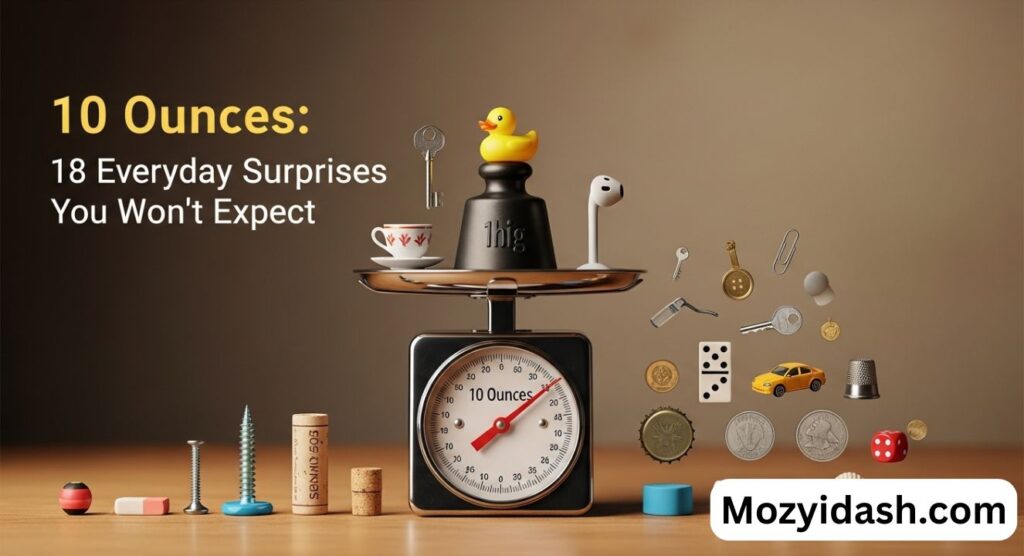
Understanding what weighs 10 ounces helps you estimate and compare items at home, in school, or at work. This simple unit of weight often appears in cooking recipes, packaging, or sports gear. It’s a real advantage when you can guess items weighing exactly 10 ounces without using a scale, saving both time and effort.
In daily life, everyday items that weigh 10 ounces include snacks, batteries, or controllers. These lightweight everyday objects provide an intuitive sense of balance and proportion. Once you start recognizing them, it becomes easy to understand common weights of daily objects, making you more precise when shipping, shopping, or even measuring for fun.
10 Ounces in Everyday Living
The idea of 10-ounce household objects connects directly to your daily environment. From a paper towel roll to a bag of chips, these common weights of daily objects surround you constantly. Learning about them makes weight measurement examples simpler and relatable, turning abstract numbers into familiar touchpoints of your physical world.
It’s also a fun way to teach children about ounces to pounds conversion and how to estimate weight without a scale. Using real items like pencils or mugs helps create a more visual, engaging learning process. These real-life weight examples show how everyday things make measurement an easy and interactive experience.
The Balance of Precision and Practice
When comparing 10 oz items, precision matters more than you think. For example, in kitchen item weights, even a small error can change recipe outcomes. Understanding ounces to grams conversion ensures accuracy when following U.S. or international recipes, helping you balance your measurements and create consistency in cooking or science experiments.
At the same time, practice helps you visualize weight more naturally. Lifting objects that weigh 10 ounces, such as a mug or remote, trains your sense of touch. Over time, you’ll develop an instinct for estimating small items weight lists correctly, which is incredibly helpful in both household and professional environments.
Exploring the Real-World Uses of 10 Ounces
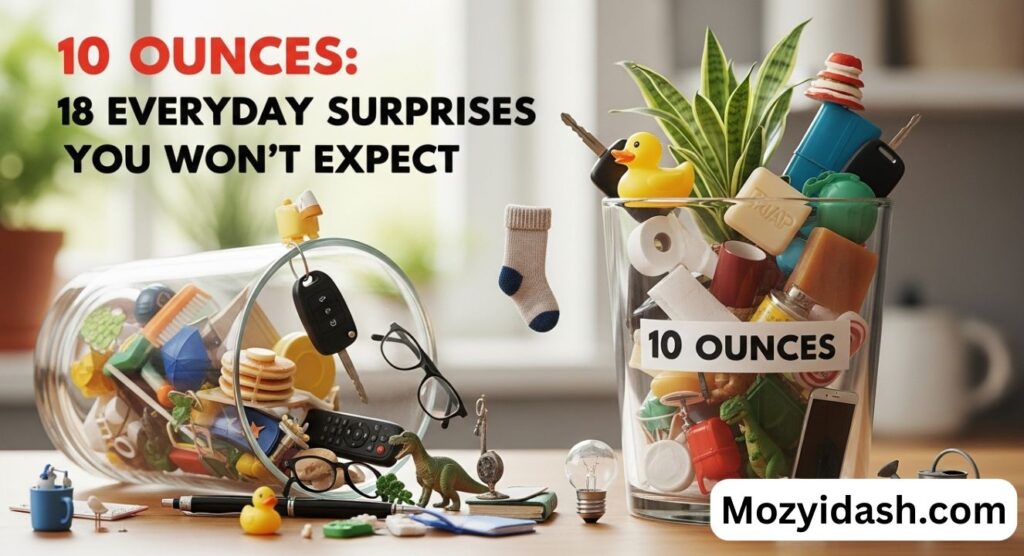
The 10-ounce weight examples are more than curiosity—they’re used in shipping, sports, and education. For instance, sports equipment weights like gloves or balls rely on standard 10-ounce measurements to maintain fairness and consistency across games. This shows how common and important the 10-ounce standard is in real-world applications.
Similarly, in mailing or logistics, examples of weights for mailing packages often revolve around this benchmark. Understanding 10 oz to lbs helps determine postage costs quickly. This makes reference weights for comparison extremely practical, turning everyday items that weigh 10 ounces into handy tools for teaching, business, and everyday problem-solving.
FAQ,s
What is 10 oz equal to in cups?
10 ounces equals about 1.25 cups in the U.S. measurement system, useful for cooking and baking conversions.
How big is a 10 oz baby?
A 10-ounce baby weighs around 283 grams, about the size of a large apple, and is extremely premature in growth terms.
How big is 10 oz of steak?
A 10-ounce steak is roughly the size of two adult palms and serves as a generous single portion for one person.
How big is an ounce visually?
One ounce looks like a ping pong ball or weighs similar to a slice of bread, helping visualize small weight portions easily.
Final Thoughts
Understanding 10 ounces through real-life weight examples gives you practical insight into everyday items that weigh 10 ounces. From a paper towel roll to an Xbox controller, these objects around 300 grams are a great way to grasp weight measurement examples and common weights of daily objects.
The next time you cook, pack, or lift something, think about what weighs 10 ounces—you’ll find it’s all around you. Knowing this helps in ounces to pounds conversion, grams and ounces equivalence, and makes visualizing weight easier in real-world tasks.



